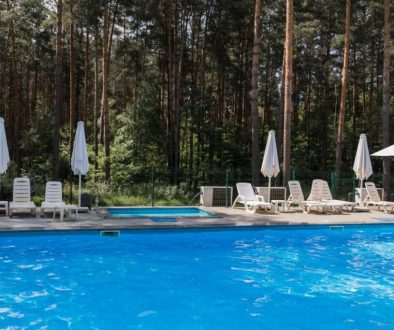The Rise of Mixed-Use Commercial Spaces in Urban Areas
The rise of mixed-use commercial spaces is reshaping urban landscapes, fusing living, working, and leisure into vibrant communities.
The Rise of Mixed-Use Commercial Spaces in Urban Areas
As urbanization continues at an unprecedented pace, cities across the globe are witnessing a significant transformation in their commercial landscapes. The rise of mixed-use commercial spaces is a pivotal trend in urban planning that combines residential, commercial, and recreational elements into single developments. This innovative approach not only enhances convenience but also fosters a sense of community and sustainability. In this blog post, we will explore the concept of mixed-use developments, their benefits, challenges, and the future of urban areas embracing this model.
Understanding Mixed-Use Developments
Mixed-use developments are designed to integrate various functions within the same space, allowing for a blend of residential, retail, office, and recreational uses. This development style promotes a walkable lifestyle, reducing the need for cars and encouraging public transportation use.
For instance, consider the popular mixed-use community of The High Line in New York City. This once-abandoned railway line has been transformed into a linear park that supports new residential buildings, shops, and restaurants. The combination of these elements creates an urban experience that is not only convenient for residents but also attractive to visitors and tourists.
Recent statistics indicate that over 60% of new urban developments in major cities are adopting a mixed-use model. This trend reflects the changing preferences of urban dwellers, who increasingly favor walkable neighborhoods with access to essential services and amenities.
Benefits of Mixed-Use Commercial Spaces
The advantages of mixed-use developments are manifold, benefiting not just residents but also businesses and local governments:
- Enhanced Convenience: By combining residential and commercial spaces, residents can enjoy easy access to shops, restaurants, and services without needing to travel long distances. This convenience is particularly appealing in urban settings where time and space are at a premium.
- Increased Economic Activity: Mixed-use developments often stimulate local economies. With more people living in close proximity to retail and office spaces, businesses can thrive due to increased foot traffic. A study conducted by the Urban Land Institute found that neighborhoods with mixed-use developments experience a 20% increase in retail sales compared to traditional single-use areas.
- Community Engagement: These developments foster a sense of community by providing spaces for social interaction, such as parks, plazas, and community centers. This communal aspect is vital in urban areas where isolation can often be prevalent.
- Sustainability: Mixed-use developments promote sustainable living by reducing reliance on cars and encouraging the use of public transportation and biking. Integrating green spaces and energy-efficient buildings further enhances their environmental benefits.
- Higher Property Values: Properties within mixed-use developments often see increased value due to their desirable locations and the amenities provided. This trend benefits both homeowners and investors alike.
Challenges Faced by Mixed-Use Developments
Despite the numerous benefits, mixed-use developments do face a range of challenges:
- Zoning and Regulatory Hurdles: Navigating the complexities of zoning regulations can be daunting. Many cities have strict zoning laws that separate residential and commercial areas, which can hinder the development of mixed-use spaces.
- Financing and Investment Risks: Securing financing for mixed-use projects can be challenging, as lenders may be hesitant to invest in developments that involve multiple uses. Developers often need to present a solid business case to mitigate perceived risks.
- Balancing Diverse Interests: Mixed-use developments cater to a variety of stakeholders, which can lead to conflicting interests. For instance, residents may prioritize quiet living spaces, while retailers desire increased foot traffic. Striking a balance can be a complex task for developers and planners.
- Design Considerations: Designing mixed-use spaces requires careful planning to ensure that the various components interact harmoniously. Poor design can lead to issues such as noise disturbances, privacy concerns, and a lack of cohesive aesthetics.
Success Stories and Case Studies
Several cities around the world have successfully implemented mixed-use developments, serving as models for others to follow:
- The Pearl District, Portland, Oregon: Once an industrial area, the Pearl District has transformed into a vibrant mixed-use community featuring residential units, art galleries, shops, and parks. The development emphasizes walkability and community engagement, attracting young professionals and families alike.
- Hudson Yards, New York City: This massive development on Manhattan’s West Side includes residential, commercial, and cultural spaces. Hudson Yards integrates a public park, shopping areas, and art installations, making it a destination for both locals and tourists.
- King’s Cross, London: This historic area has undergone a significant transformation through mixed-use development. King’s Cross now features offices, homes, shops, and cultural venues, revitalizing the area and creating a bustling hub of activity.
These examples illustrate how mixed-use developments can rejuvenate urban areas, drive economic growth, and enhance the quality of life for residents.
Best Practices for Developing Mixed-Use Spaces
To ensure the successful development of mixed-use spaces, several best practices should be followed:
- Engage the Community: Involve local residents and stakeholders in the planning process. Community input can help identify needs and preferences, ultimately leading to more successful developments.
- Conduct Market Research: Understand the local market dynamics, including demographic trends and consumer preferences, to tailor the development accordingly.
- Prioritize Sustainability: Implement green building practices and incorporate parks and public spaces to promote environmental stewardship and enhance the appeal of the development.
- Design for Diversity: Ensure that the development caters to a range of demographics, including families, young professionals, and retirees. This inclusivity can foster a vibrant community atmosphere.
- Integrate Transportation Solutions: Collaborate with local transit authorities to ensure that the development is well-serviced by public transportation and provides safe pathways for pedestrians and cyclists.
The Future of Mixed-Use Developments
As urban areas continue to grow, the demand for mixed-use developments is expected to rise. The COVID-19 pandemic has accelerated changes in how we view urban spaces, emphasizing the need for adaptable and resilient community designs.
Future trends may include the integration of smart technology in mixed-use spaces to enhance convenience and sustainability. Additionally, the focus on wellness and green infrastructure will likely shape the evolution of these developments, ensuring they meet the needs of residents while addressing environmental concerns.
Moreover, as cities grapple with the implications of remote work and changes in commercial real estate demands, mixed-use developments may serve as a solution, offering flexible spaces that accommodate both work and leisure.
Conclusion
The rise of mixed-use commercial spaces marks a transformative shift in urban planning, combining living, working, and recreational environments in innovative ways. These developments enhance convenience, stimulate economic activity, and foster community engagement while addressing sustainability challenges.
As urban areas continue to evolve, embracing mixed-use models will be essential for creating vibrant, resilient communities. Stakeholders, including developers, city planners, and local residents, must collaborate to overcome challenges and leverage best practices to realize the full potential of mixed-use developments.
The future of our cities lies in the ability to adapt and innovate, creating spaces that serve the diverse needs of their inhabitants. If you’re a developer or a local government official looking to explore the potential of mixed-use spaces in your area, now is the time to act. Let’s work together to reshape our urban landscapes for the better.



